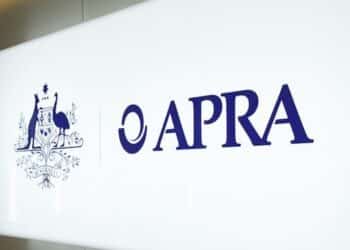On the latest episode of the ifa Show, financial adviser at Complete Wealth, Dr Ben Neilson, explained how a new framework for advice he developed during his recently completed PhD research can either “increase the quality of advice or enhance the accessibility of advice”.
“In a nutshell, professionalism boosts trust and then trust drives engagement and then engagement enhances comprehension. Comprehension reduces costs and time to create and then lower costs improve your level of serviceability,” Neilson said.
“So now the next job is how do we punch that advice out as fast as possible in a manner that the clients can actually understand so they can make decisions quicker.
“Hypothetically, we can get the transaction, we can get the advice across to the consumer, and then once we can do that, we can rinse and repeat and we can service significantly higher levels of consumers.”
Using this method, Neilson said they are more than halfway to their goal of 600 clients each. He is serving 354 clients, and fellow adviser Matt Armstrong is at 421, all while only working four days a week.
“The faster you can get the result, the quicker you can offer that result to the client and then, in turn, the more people you can see.”
“Because we’re doing it so quickly … the profit is going through the roof because we’re not sitting on it and following it up and we don’t have all these external costs, so we can charge you less and we can realise more and we can have that plan done so you get the results significantly faster.”
To enact this method, his firm utilised advice assistants to speed up the advice process and reduce the time advisers spent on lower-value tasks.
“We can potentially reimagine the adviser’s role. So the adviser’s role is for really high-level, granular strategic advice, and then the second it comes down to things that are borderline admin, you can outsource that.”
“[The assistant’s] job is to make sure that I don’t miss anything, and then they’re going to be your point of call for the specific. So you and I can talk about the stuff that matters, the relationship, your family, the advice, the specifics, say around salary sacrifice, and then the advice assistant will go to the fund and figure out what the specifics are of that thing.”
In this model, the assistant completes the fact find, checks to see if the client requires any renewals, engagements or fee forms, and makes any necessary updates to balances, among other things, before the meeting.
Meanwhile, the adviser is still coming up with and implementing the strategies for clients, conducting client meetings and discussing topics as necessary, but has a significantly lighter administrative workload.
“All we want to do is create a synergy around what we think the barrier is and then how to address it so we can expand the heck out of our access. We don’t want to service 150 clients, we want to service 600 client groups,” Neilson said.
He added: “It’s aggressive, however, we think it’s achievable. If I look at what we’ve done from the last two years, it’s highly likely that we’ll be sitting here in a couple of months and we’ll be bang on that number.”
To hear more from Dr Ben Neilson, tune in here.




Dear Gentlemen
I extent a certain level of respect to you all, regardless of your views, it’d be appreciated if you practiced the same.
The only question you need ask in response to reading the above article is “how”?! “How might I do this too?”
We are limited by our own capabilities, and we’re in the unique position to be able to map our own futures. What we are seeking is high quality cost effective solutions which are available to all.
We are taking measures to push our levels of serviceability in the right direction, we refuse to simply increase the consumers costs to cover issues that are not theirs.
Any movements to increase serviceability and decrease costs should be encouraged, if not .. please contact us and we’ll buy your business and move you on.
I appreciate any and all feedback which further develops our advice process.
You ask for respect but show none for others with significant experience in the industry.
Many of us have spent a lifetime cultivating deep and meaningful relationships with clients. These relationships have been built upon excellent service, being attentive and proactive with financial solutions. There is a time cost associated with building such relationships that no particular business process efficiency can reduce. By virtue of this there is a natural limit to how many clients one can reasonably service without compromising your service ethic. That number is certainly not 600 not unless you plan to seriously reduce the service offering in which case what you are advocating is a lesser service for a cheaper price. We can all choose between products and services and ultimately “you get what you pay for”.
I am all for efficient processes and I doubt whether most practices are not engaged in some activity to enhance their own – I know I am. I also know that efficiencies get you only so far – they do not mitigate the significant costs of the industry – and I am sorry all costs are business input costs that effect practice profitability and to suggest that some costs should be quarantined from clients is absurd.
I suggest you take some time for some quiet introspection and consider how you come across to your colleagues in the industry – with respect it is borderline offensive and patronising.
Thank you for your feedback. Your response shows that you truely care.
I respect the hard work and dedication that goes into building strong client relationships. However, my position remains clear: we cannot ignore the need for efficiency and cost-effective solutions in this sector. The challenges we face require us to rethink traditional approaches, not to settle for the status quo.
That said, I’m not suggesting a reduction in service quality, but rather a shift toward smarter, more scalable solutions. We’re all in this together, and instead of working against each other, I believe we should collaborate to find ways to solve these issues. There is no reason we can’t maintain high service standards while improving serviceability and managing costs more effectively.
Let’s work together to find solutions that benefit both the sector and our clients, rather than letting differences stand in the way of progress.
I would appreciate if you us be willing to reach out to me, I’ll do all in my power to help you and your advice offering.
You’re the sort of person we need to stick around in this sector, of we lose people like you .. we’re in big trouble!
I notice a lot of these so called doctors on Linkedin espousing all sorts of concocted theories of servicing clients. The reality is that like any service the more clients you see the less personalized and quite frankly the less service is provided individually. The truth is that given the number of posts the good doctors make on Linledin one wonders when they have the time to see clients at all.
Having read the comments of the other contributors I am relieved and encouraged to see that most advisers continue to take the responsibility of providing advice seriously. If we are ever to be considered a profession, it is essential that the regulatory framework be taken seriously. The code of conduct for all of its critics is an excellent reminder of how we should conduct ourselves – unfortunately this proposal fails on so many levels. Advice is not a volume business manufacturing generic plastic disposable rubbish.
I had to read this twice. I would be very uncomfortable being a client if only engaged for a “meeting” once a year. Paying a low fee might for this trade off might make this work for some time, but leave that class of service to the funds. Advisers must ensure they diligently consider the clients’ full and broader circumstances and conduct prior, mid and post-review care. This alone, even if backed by a solid support team, limits client numbers to circa 120. Any higher than this, things will end in tears for both parties.
I love the use of Doctor .
Advice is not as simple as saying hi once a year or even twice . It’s being there for a client when they need you, being a person who they can talk to about their concerns and even, at worst, attending funerals . I fear the advice industry has gone massively backwards, but, like politics, pendulums swing one way then the other , so there is always hope .
This is absurd. Why do we publish such u professional trash? Are we really going so backwards as an industry ? These money hungry advisers are in it purely for profit. There is not a hope in hell they offer any high level advice and ongoing care to 600 clients. Clip the ticket and then brag about how efficient they are? Really?this is where we have landed ? I’d hate to be your client.
Yes it can absolutely be done as long as the support capability is in place and a robust governance oversight process is in place
If you have the capability to take away all the administrative tasks in the advice process then it becomes doable
The challenge as an adviser found out when he was banned for five years is ensuring that the strategy recommendations following the fact find is exactly what was discussed and the recommendations presented exactly match
Having the human capability and fail safes in place to ensure that this happens is crucial along with regular governance oversight reviews of the advice process to ensure it remains comprehensive
Get this right and it’s absolutely possible not forgetting to record the soft facts amd personal details to ensure relationships are maintained
Cookie cutters at their best. Macca’s would be proud of you. I prefer to take the Attica approach.
So much abstract with talk about maths of doing big numbers ,what kind of advice are we talking about ,don’t know .
So, basically using paraplanners? I thought that’s already been the standard business model for decades.
Just wait until hammer-wielding ASIC comes looking for more nails.
So this is simply serving a far higher number of clients charging them each a lower amount vs serving a far lower amount of clients charging them each a higher amount? I know which model most advisers would prefer to work with and it is not trying to get burnt out trying to serve 600 client groups under the current regulations!
No one could serve 600 clients under current regulations.
That’s the point.
Actually, yes they can, that’s the whole point of this discussion. 3 meetings a day x 5 days per week x 40 weeks a year = 600 meetings. The point is meetings, but even if every client needed 2 meetings per year, that’s still only 6 meeting per day. That is very doable if all you do is meetings. Accountants and lawyers must and do exceed this level of time per client. GP’s are a whole other level. The difference is the business system that supports them. If an Adviser only deals with client meetings, 1,000 client engagements per year is easily achievable (5x5x40), with plenty of time left over.
It is the business model that determines Adviser productivity, not the Adviser. Of course this does not mean Adviser’s must do this many, but it is what they can do and the relative revenue determines the ultimate value. No doubt many would prefer 100 x $10,000 clients, but 500 x $2,000 can end up with a much less complex life. Neither is better or wrong, provided the business supports it.
What ultimately matters is the cost to serve. If you can service clients at $1,000 base average cost, $5,000+ clients become extremely profitable.
What is the point of an adviser if all they do is present other peoples work? 3 or 6 meetings a day doesn’t leave a lot of time for actually constructing good advice. Unless it’s all cookie cutter, low quality advice.
I said – it isn’t possible under current regulations.
I hope your life cover is up to date.
Sorry not to be a negative Nancy but that sounds good in theory and completely different in practice. You’ve got the adviser and support staff sick and annual leave and also issues with production of docs, customizing and personalising and also transfer of info, vetting final SOA and implementation apps and vetting post lodgement that the FP is solely responsible for as the AR, amongst complexity with certain advice moving parts. Also you need 2 appnts to onboard a client at minimum, you’re not meeting them once with an SOA to present and implement, likewise for reviews you’d be seeing a number of them twice due to change in personal circumstances or expiry of an SOA unless it’s being done incorrectly and an SOA is prepared without knowing their circumstances and again this an FP requirement and not support.
The arithmetic to get to 600 meetings is irresponsible and we shouldn’t be aiming for 5 x 5 x 40. This is implicitly a cookie cutter approach and don’t forget that accountants, lawyers and GP’s also do follow-up appointments with people – it wouldn’t be 600 to 1,000 unique clients. This also does not consider the variability and nuances in the nature of the work in these careers.
If a FP firm has 1 strategy for investing (stick everyone in an SMA based on risk profile), 1 strategy for insurance (group insurance punched into a calculator and implemented by someone overseas), 3 or 4 super strategies and 1 or 2 strategies for everything else, then the adviser becomes a cog in this machine as much as the outsourced workers in Nepal/The Philippines. Focusing on speed of delivery rather than the client experience is the wrong approach. It also ignores that peoples’ cognition (not just comprehension) can change through the advice process and this takes time. Building a relationship with clients takes time and if an adviser would not do this with me and is overzealous in delivering their premade solutions to me as quickly as possible, then I would not want to be their client.
From the article, it seems that the adviser would be presenting well for 1-2 meetings and stamping the advice the paraplanner(s) have provided based on similar fact finds. It would take a few paraplanners to churn out advice this quickly and for the volume. Then, the outsourced staff would be there for any additional implementation meetings.
This isn’t what a profession looks like and I would not want to be the client of an adviser who does this.